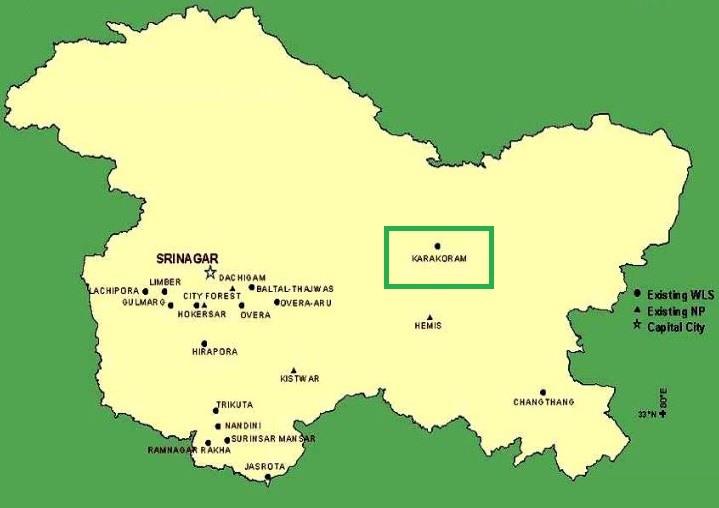NBWL Clears Key Roads Through Karakoram Sanctuary
Why in the news?
The National Board for Wildlife (NBWL) has approved five strategic road projects in Ladakh, enhancing military and civilian infrastructure, with four routes passing through the Karakoram Wildlife Sanctuary, ensuring protection measures for endangered species.
About the Key Road Projects Approved in Ladakh:
- The National Board for Wildlife (NBWL) Standing Committee approved five key road stretches in Ladakh, including four passing through the Karakoram Wildlife Sanctuary (KWS).
- These routes will improve access to Daulat Beg Oldie (DBO), India’s northernmost military post.
Strategic Importance of Road Developments:
- The roads are vital for military logistics and civilian access, especially following the 2020 Galwan Valley clashes.
- The Durbuk-Shyok-DBO route, 255 km long, runs close to Chinese-held territory along the Line of Actual Control (LAC).
- DBO also has India’s highest airstrip.
Wildlife Protection and Border Projects:
- NBWL has imposed conditions for wildlife protection along these roads to safeguard species like the Tibetan antelope and snow leopard.
- Other major border development initiatives include the Vibrant Villages Programme (VVP) and the Border Area Development Programme (BADP) along the India-China border, and Smart Fencing (CIBMS) along the India-Pakistan border.
Key points: National Board for Wildlife (NBWL)
- Statutory body established in 2003 under the Wild Life (Protection) Act, 1972.
- Replaced the Indian Board for Wildlife (1952).
- Chaired by the Prime Minister; advises the government on wildlife conservation policies.
- Acts as the apex body for reviewing wildlife-related issues and approving projects around national parks and sanctuaries.
- The Standing Committee, chaired by the Minister of Environment, Forest, and Climate Change, approves projects within or near protected wildlife areas (within 10 km).
About the Karakoram Wildlife Sanctuary:
- Location: In Ladakh, bordering Jammu and Kashmir, near Hemis and Deosai National Parks.
- Landscape: Features snow-covered peaks, alpine fields, and ravines.
- Climate: Average temperatures during the warmest month are below 10°C, with some heights below 0°C.
- Major Peaks: Saltoro Kangri, Saser Kangri I, and K12.
- Rivers: Shyok and Nubra Rivers.
- Fauna: Includes snow leopards, Tibetan antelopes, Siberian ibex, and Bactrian camels.
- Flora: Rich in alpine vegetation, medicinal plants, and endemic species like Rosia webbiana and Ephedra.
Sources Referred:
PIB, The Hindu, Indian Express,Hindustan Times




